An ever-changing ‘heartbeat.' How Churchill Downs’ Paddock has changed over 150 years
As Churchill Downs enters its 150th year of racing, one of its most well-known and highly trafficked areas is getting its biggest facelift ever.
The $200 million re-imagining of the paddock is nearing the finish line, significantly enlarging its footprint and relocating the pre-race gathering space to a prime position between the iconic twin spires.
“If you look at what has happened at the track long before our time, they've always continuously improved the property,” said Ryan Jordan, senior vice president of real estate development with Churchill Downs Inc. “We feel responsible to be good stewards of that, to carry that history forward, to make sure that we are continually relevant, while at the same time making sure that we honor, respect and maintain the history and tradition of the event.”
After a 2023 spring meet marred by a dozen horse deaths (including two on Kentucky Derby day), the completion of the paddock project is a major milestone and welcome news for the racetrack and its Louisville-headquartered parent company, Churchill Downs Inc., representing the culmination of years of planning, design and construction.
Timeline: How the Churchill Downs paddock has changed over 150 years
In replacing a paddock that stood for more than 35 years, Churchill Downs promises an improved experience for its guests, from better views and improved traffic flow to one-of-a-kind experiences for premium ticket holders.
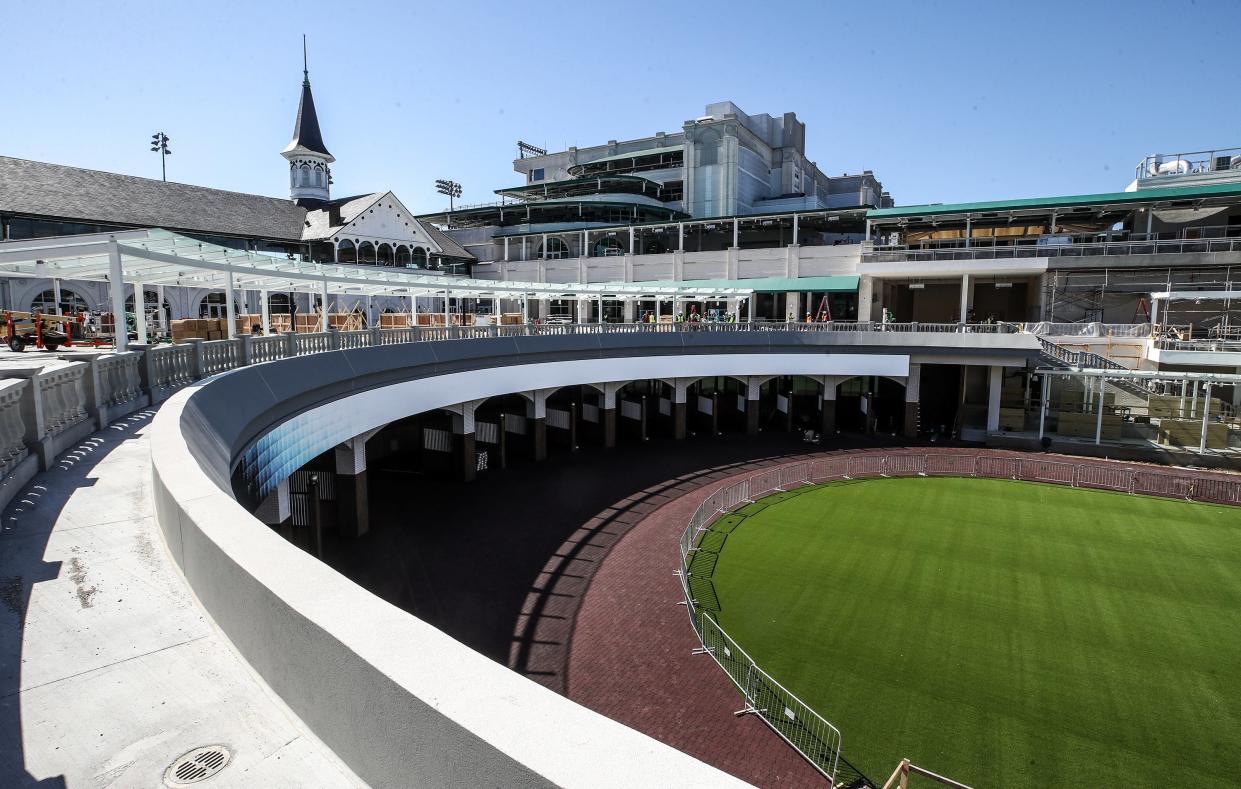
“The thing that I've been saying to people who are like, ‘Oh, I’m going to miss the 1986 paddock,’ is we’ve had this change so many times over the last 150 years because it has to,” said Jessica Whitehead, curator of collections at the nonprofit Kentucky Derby Museum. “Just like the grandstand has had to change so many times and all different kinds of structures have had to change. The success of Churchill Downs necessitates it.”
From its humble beginnings as a small wooden structure to a colossal centerpiece that company officials call the "heartbeat" of the track, much has changed for the Churchill Down paddock, while still more has stayed the same.
The paddock at the dawn of Churchill Downs
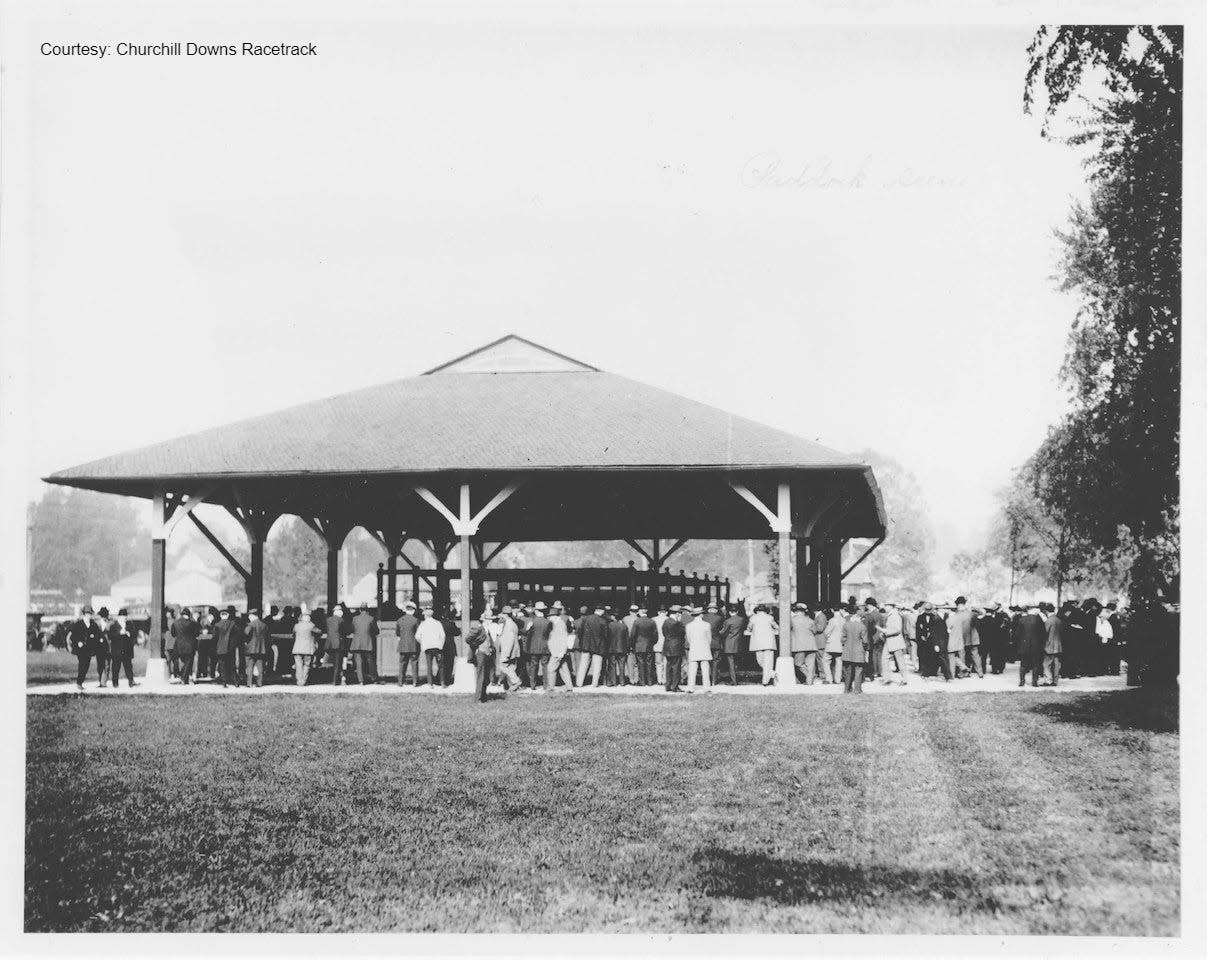
Now a focal point of the track, Churchill Downs’ paddock started 150 years ago in a very different place with a more narrow purpose than we think of today.
A November 1874 article in The Courier Journal highlights features of the new Louisville Jockey Club, founded by Meriwether Lewis Clark Jr., the grandson of famed explorer William Clark.
Adjoining the clubhouse was the betting shed and the paddock, where horses are saddled before each race.
That structure was likely a simple one made of wood, Whitehead said. It, along with the grandstand, were not in the same locations as their modern-day counterparts. Until 1895, the layout of the grandstand on the track’s north end and stables on the south side were inversed.
The original layout had spectators facing the setting sun, one factor leading track owners to build a new grandstand on the site it stands today.
An article the day after the 1889 Kentucky Derby called the race day scene in the paddock “next to indescribable.”
“Across the track the scene was in many instances extremely ludicrous,” it read. “Nearly up to the turn in the stretch and as far as the first furlong post down the track, the paddock was lined with people, twenty-five to fifty feet deep, all struggling to get an advantageous stand near the fence.”
A scene from the 17th Kentucky Derby in 1891 seems just as hectic.
“A dead heat had just been run, but the people did not wait even to see whose number was posted, so eager were they to see the colts that were to compete for the famous prize,” read a newspaper account. “Packed along the iron fence separating the lawn and betting shed from the new saddling paddock were hundreds of men, peeping over the shoulders of one another to catch a hasty peep at the blanketed horses walking around the square of turf in front of the covered shed.”
A view of the 19th-century-era paddock comes not from photos but from fire insurance maps from The Sanborn Map Company. An 1892 map shows the paddock off the betting shed, which was adjacent to the grandstand.
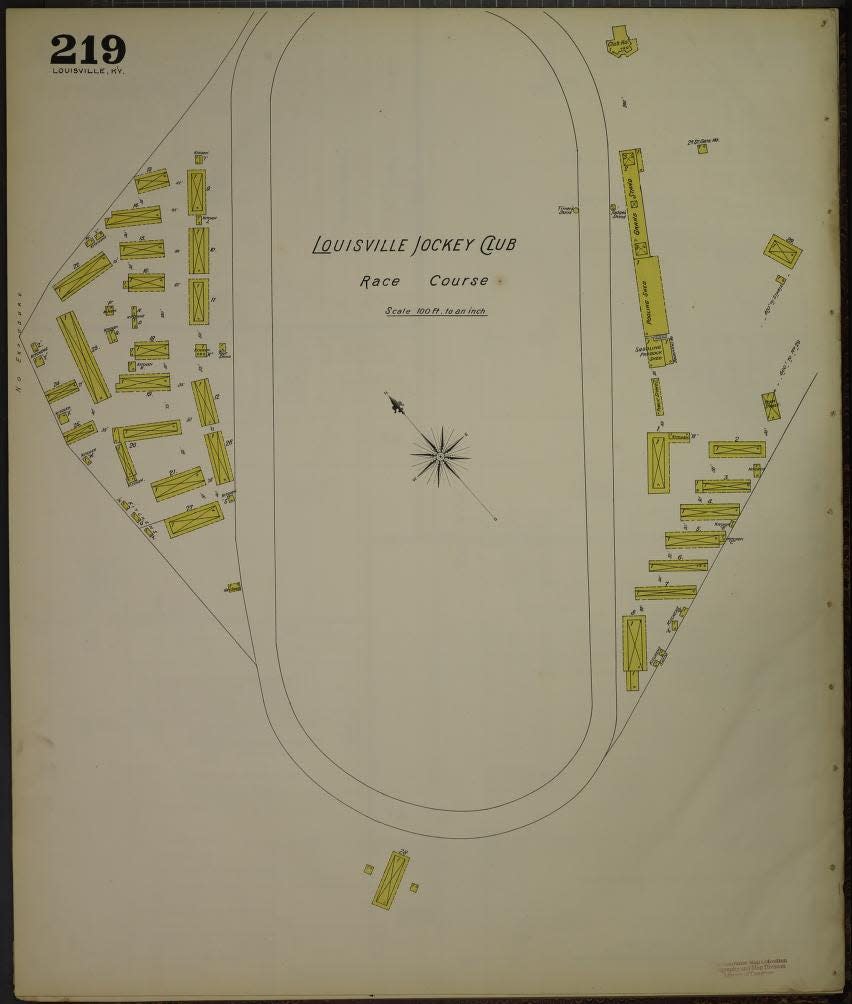
When the grandstand moved to the north side of the racetrack, a new paddock was built underneath it, specifically, under the ladies’ section.
“That didn't stay very long,” Whitehead said. “Probably for obvious reasons. It probably stank to high heaven for the ladies, so they probably didn't like that. I'm sure nobody liked that.”
A few years later, the paddock appears to have expanded by at least double, according to The Courier Journal reporting. Growing from six stalls to 12, the paddock could better accommodate the full field of horses.
“Immediately after the third race there was a rush to the paddock by the lucky ones who had badges admitting them to its sacred precincts," reads a May 5, 1898, article, "and those who were less favored contented themselves with lining up against the outside fence, for the colts that were to race in the race of all Kentucky races of 1898, the Kentucky Derby, were the next ones that would enter the paddock gates and every true lover of the sport of kings wanted to get a look at the colts that were to battle for a small fortune and a lasting name in the annals of American turfdom."
The paddock floodgates open
The early 1900s brought more changes to the paddock, bringing it closer to the version seen today.
In its early decades, the paddock wasn’t a gathering spot for all racegoers. At first, it was a space for men as it wasn’t considered ladylike for women to be seen in a space so heavily connected to gambling.
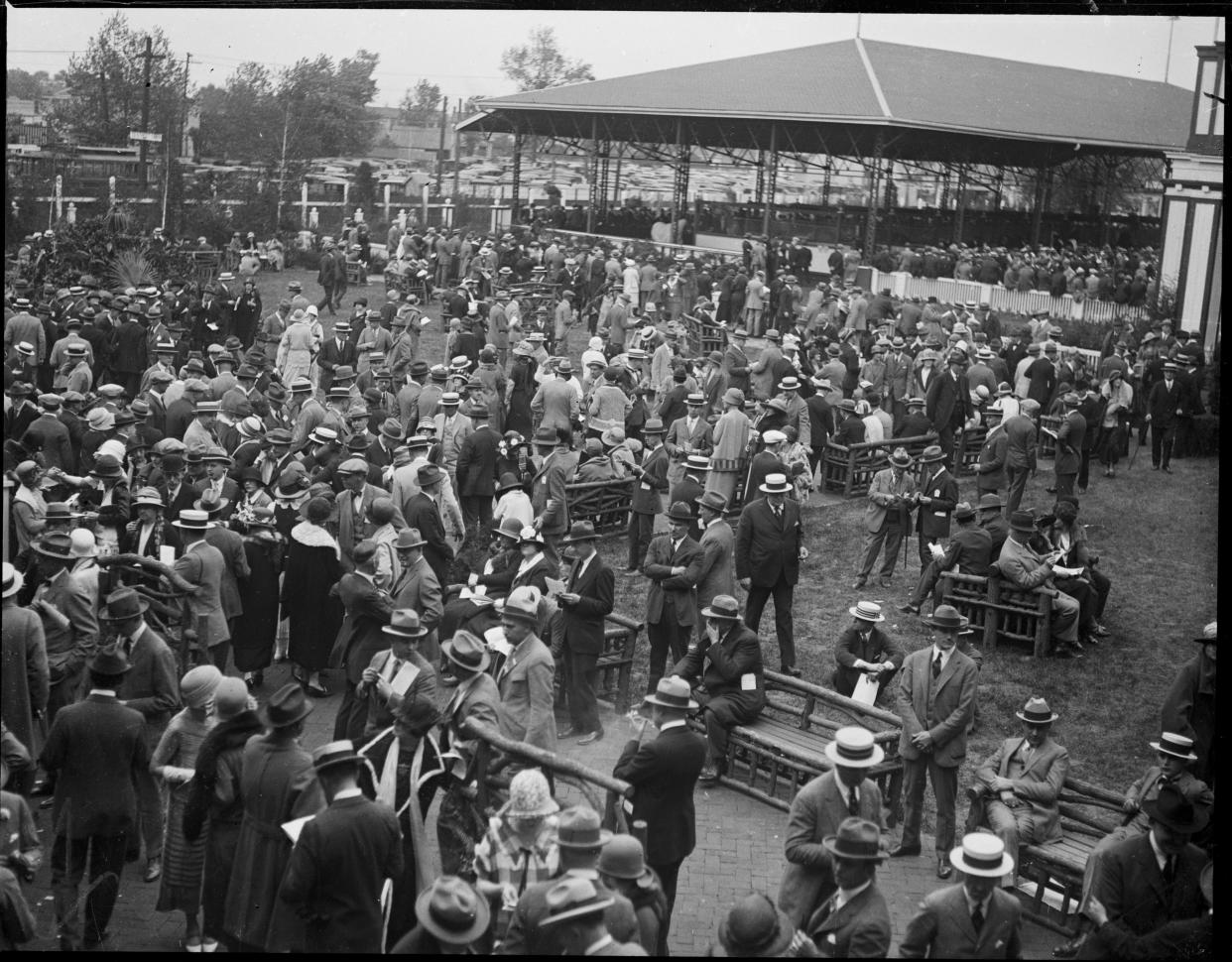
Whitehead said the racetrack was focused on facilitating gatherings of social elites and testing thoroughbred bloodlines.
“So the paddock in that sense would have been very important to a certain set of people, but of course, not everybody was allowed in the paddock at that time,” she said.
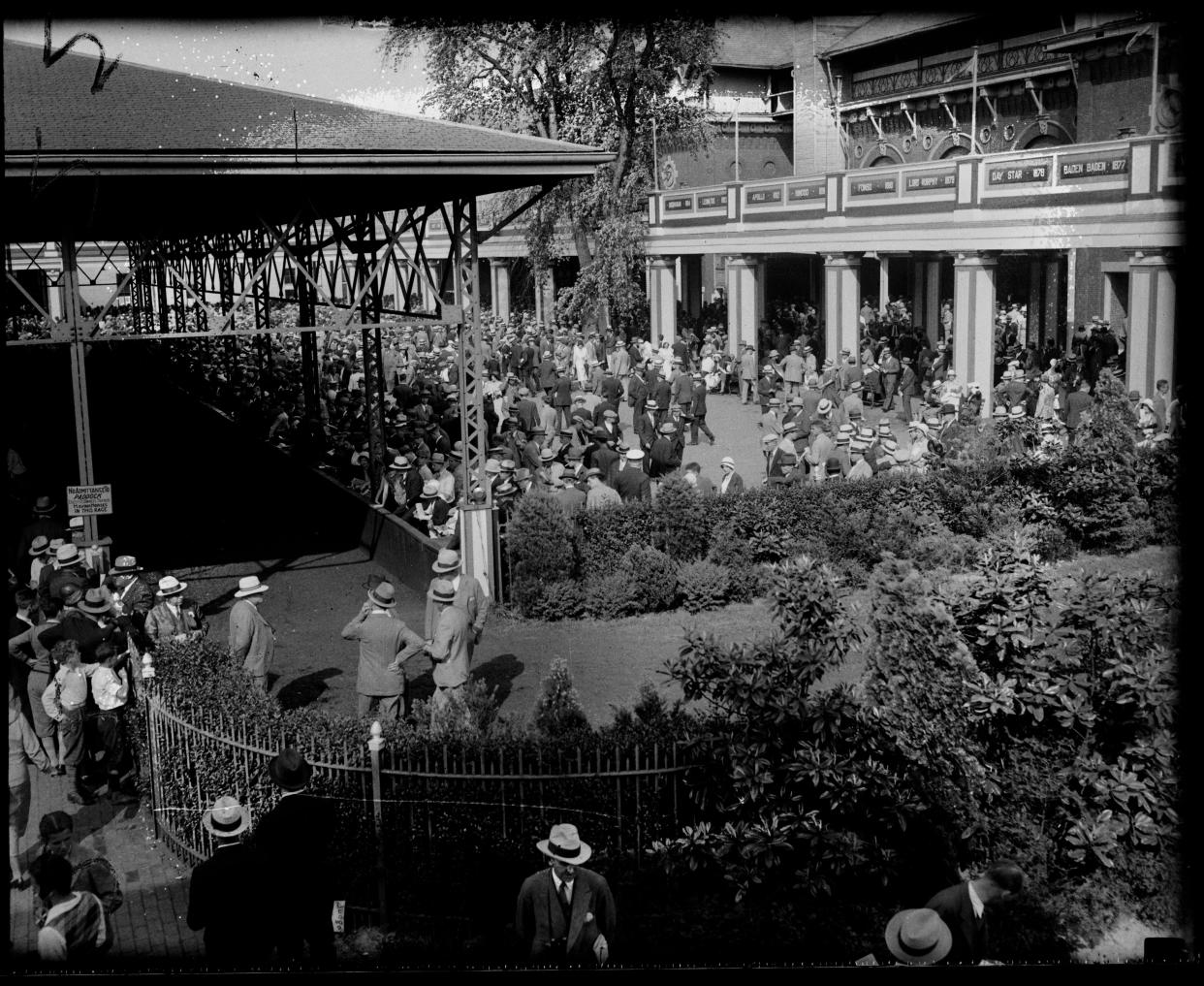
Often on the move in its early years, a freestanding wooden paddock made its debut in time for the 29th Kentucky Derby in May 1903, attended by some 25,000. The Courier Journal reported it, and the betting shed, were “stuffed with men wedged in until they formed an impenetrable barrier to the late-comers who desired to wager..."
The next big shake-up for the paddock came in 1917, when future track president Matt Winn, in a bid to better accommodate anticipated Kentucky Derby crowds in the 30,000-40,000 range, removed a fence between the paddock and grandstand and dropped a separate paddock entry fee.
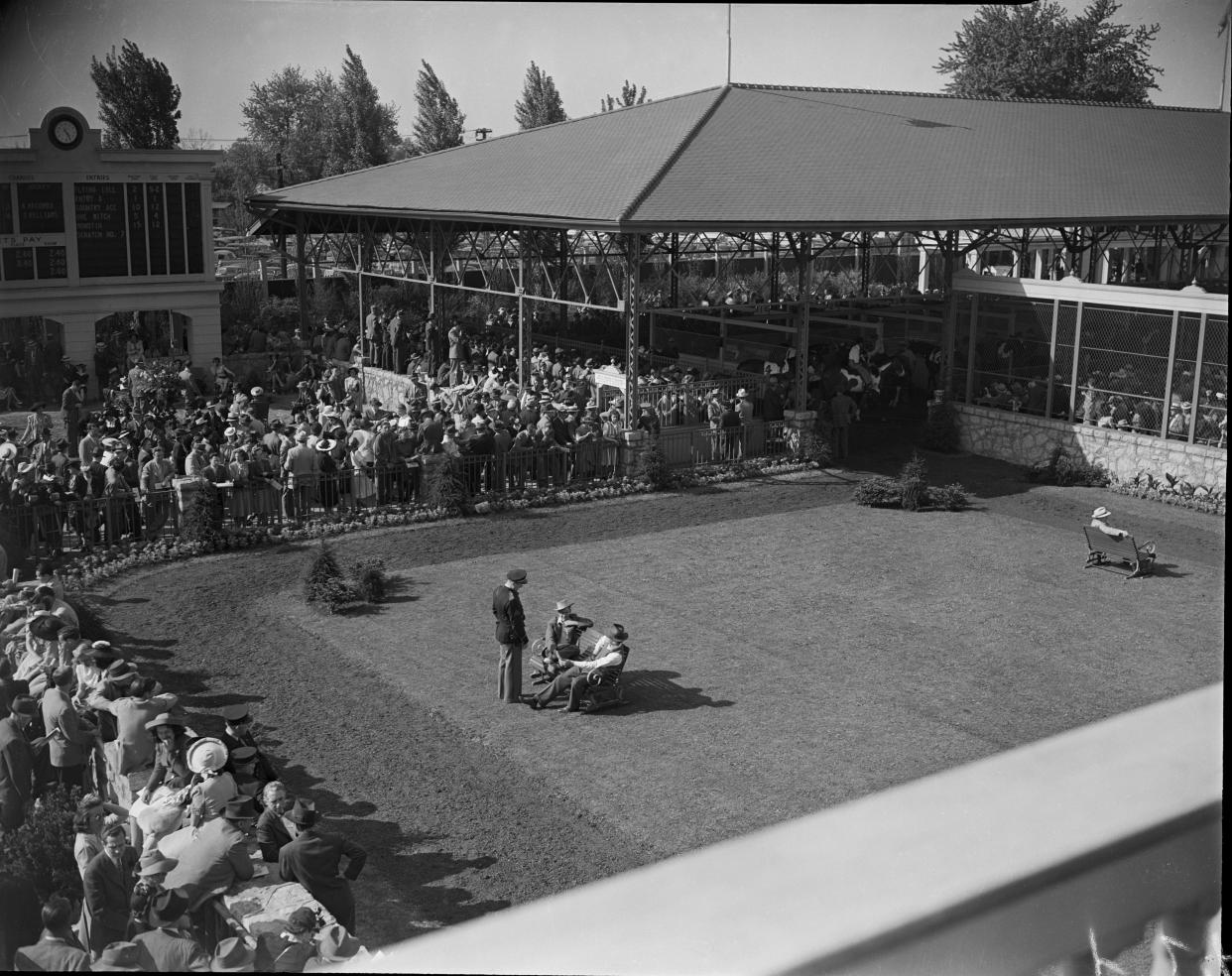
“That was a big sort of democratizing step to open the paddock up because it sort of demystified what was going on ... for most of the regular racegoers,” Whitehead said.
Yet another big change came ahead of the 50th running of the Kentucky Derby in 1924, when a larger, 22-stall steel paddock was built behind the grandstand, between the twin spires.
An electronic odds board was installed near this paddock in 1941, only to be replaced in 1946 by a much larger tote board that lasted into the 1980s.
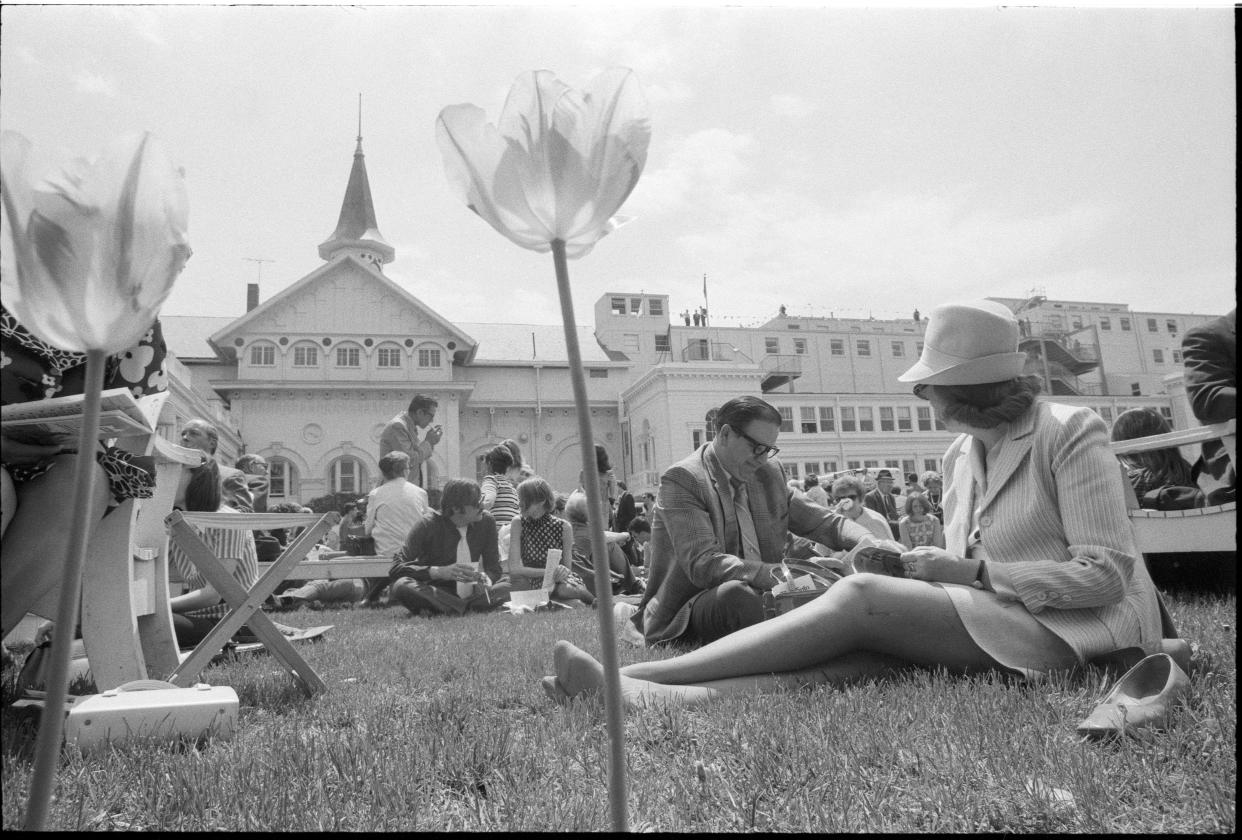
Though the paddock shifted with both these installations — sometimes closer to the grandstand, other times closer to the modern-day museum — it would go on to be the longest-standing paddock in the track’s history, lasting more than 60 years.
“As they kept expanding and building new additions, this structure stayed, but they ... sort of shuffled it around based on the Tetris that was going on in that larger property,” Whitehead said.
A modern-era paddock rises
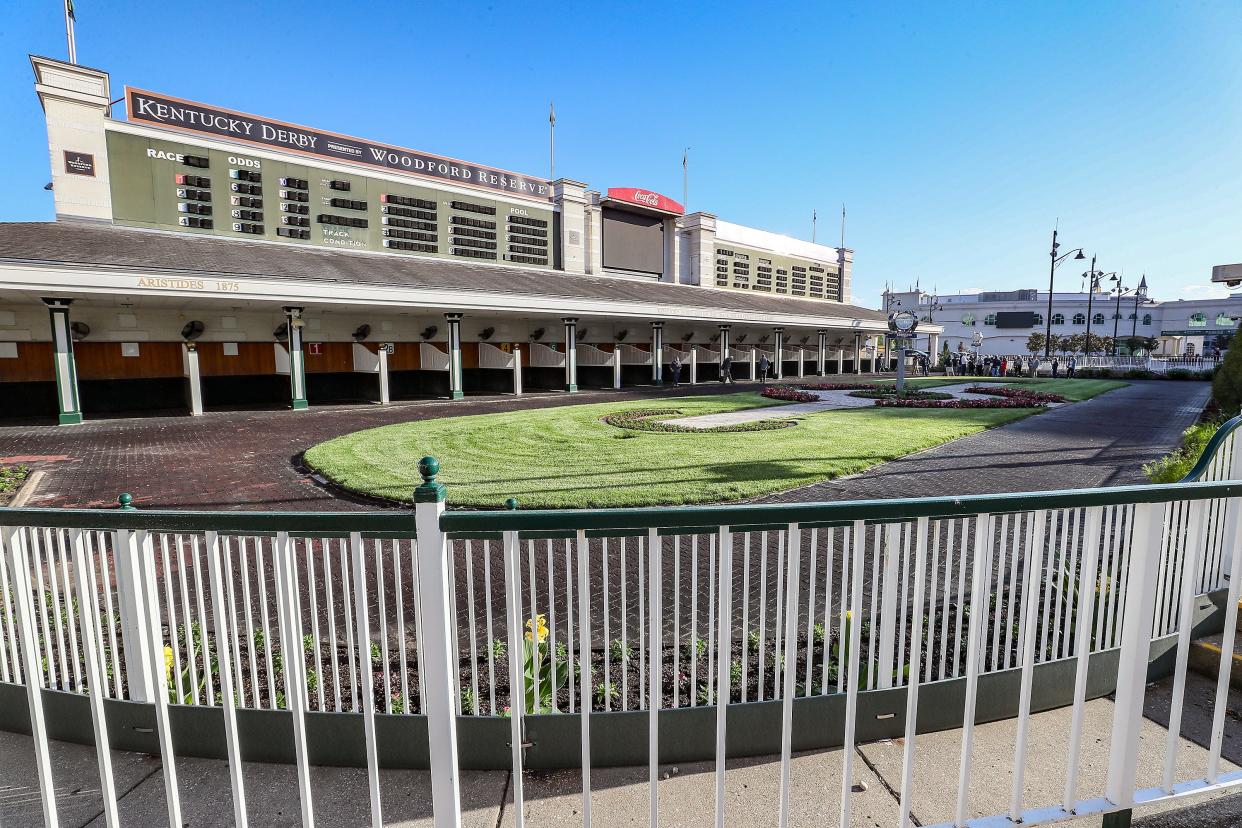
The paddock that Churchill Downs regulars and once-a-year Derby-goers have come to know was the result of a $2.6-million project in the mid-1980s.
The 1986 running of the Kentucky Derby was the last Run for the Roses for the steel paddock structure that saw 10 horses begin their Triple Crown journey.
In its place rose a new 20-stall paddock structure with a giant toteboard. The white-bricked building, the walking ring, and the grassy center opened in time for the fall meet.
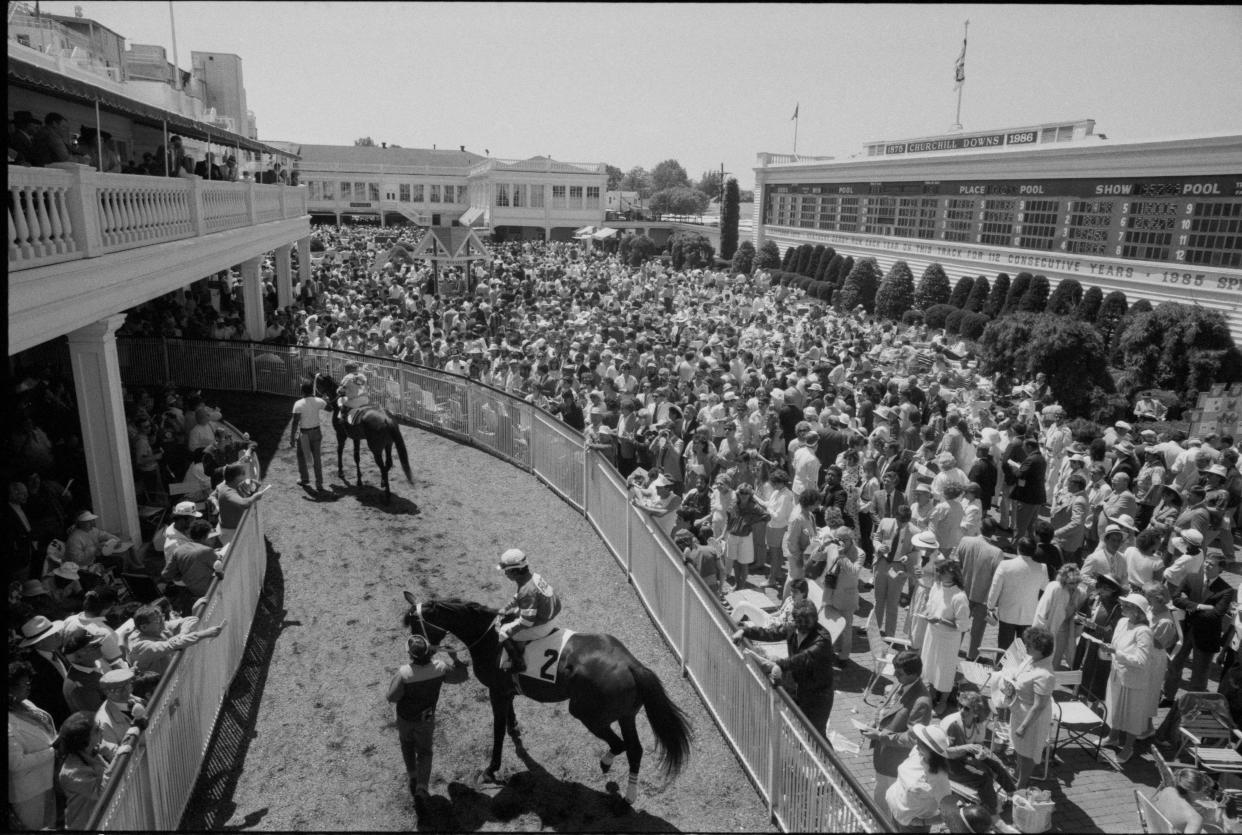
Track officials at the time said a bigger paddock was needed.
“I’ve always thought this paddock was inadequate for this place … I’d say nine-tenths of the tracks in the country had a better paddock than Churchill Downs had. I was always about half-ashamed of our paddock,” said then-Churchill Chairman Warner L. Jones Jr. “I think we’ve been fortunate nobody really got hurt. On Derby Day, there’s hardly room to get your breath, let alone get out of the way of some wild horse.”
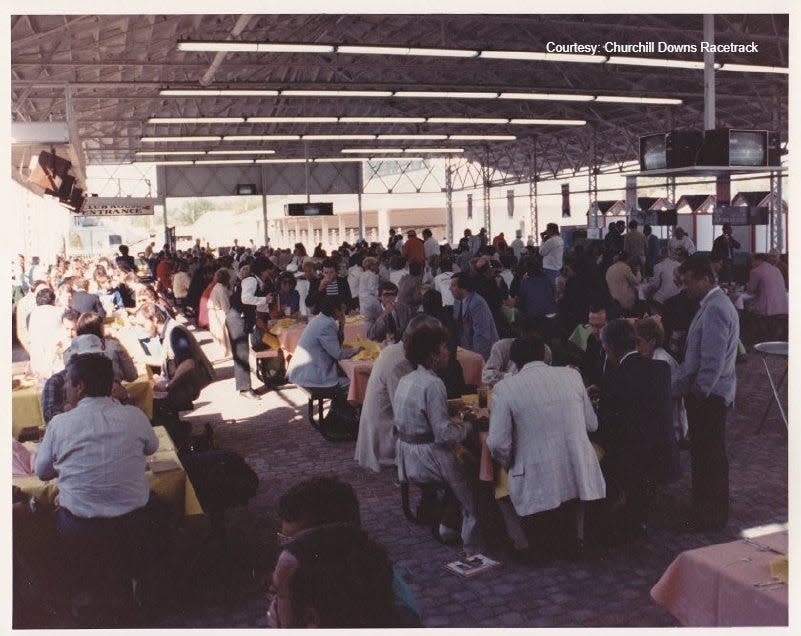
The old steel paddock structure, however, didn’t go away. Churchill Downs rebranded it as the Paddock Pavilion and used it as a beer garden with a stage, dancing area and seating for more than 500 people.
That use continued until 1997 when the racetrack converted the open-air paddock building into an enclosed simulcast watering center in a $1 million project.

The old 1920s-era paddock finally met its end as part of a $9 million capital improvement project in 2012 that also included the creation of The Mansion.
The demolition freed up space in the paddock plaza, opening up the paved area between the museum and the 1986 paddock.
The $200 million upgrade nears the finish line
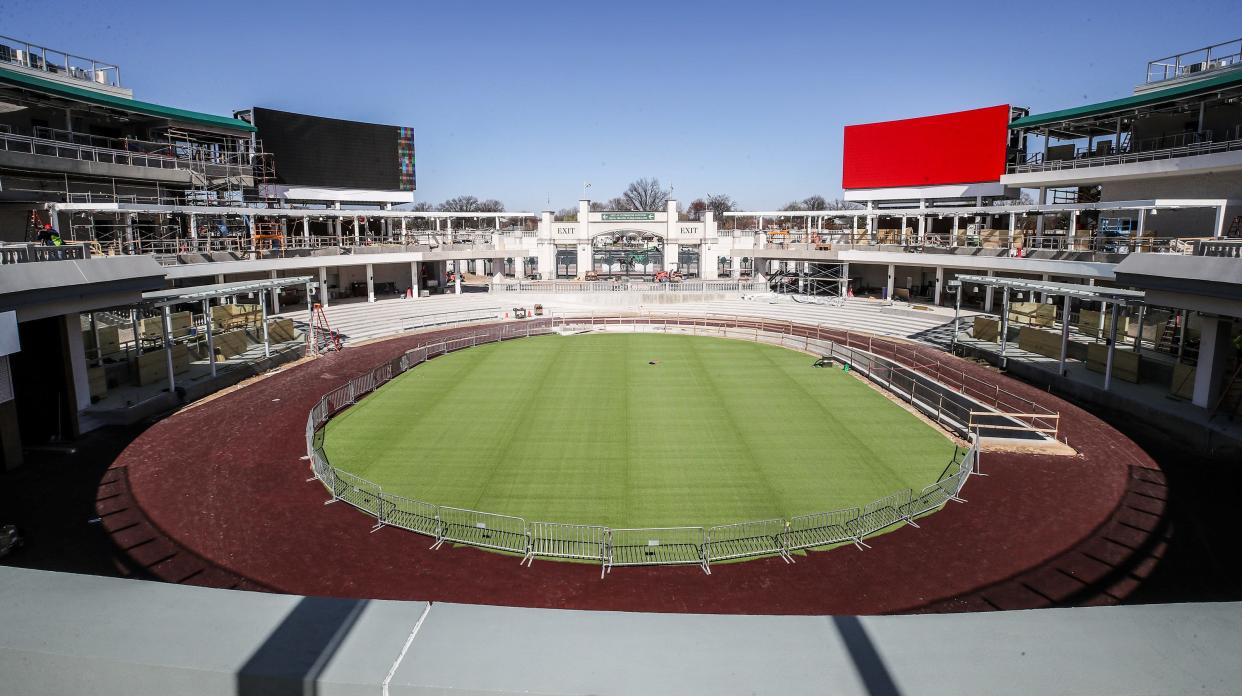
When racegoers walk into Churchill Downs for the historic 150th running of the Kentucky Derby, they’ll be greeted by the track’s largest capital investment in recent memory.
Gone is the 1986 paddock and in its place is a multi-level, horseshoe-shaped structure that rises above the recessed horse stalls, walking ring and center green.
New double-sided video screens will show the action in the paddock, and a new digital ribbon running above the stalls will show horses’ statistical information.
More than doubling from 5,000 square feet to 12,000 square feet, the paddock will be able to accommodate 2,400, up from about 1,000 people.
Turned 180 degrees, with stables now facing outward from the grandstand, the new paddock has moved much closer to the grandstand and is centered between the twin spires.
At the ground level are Club SI and the Woodford Reserve Paddock Club, luxury seating areas promising unparalleled up-close paddock views in addition to open-air terraced standing-room-only space for any frontside Derby goer.
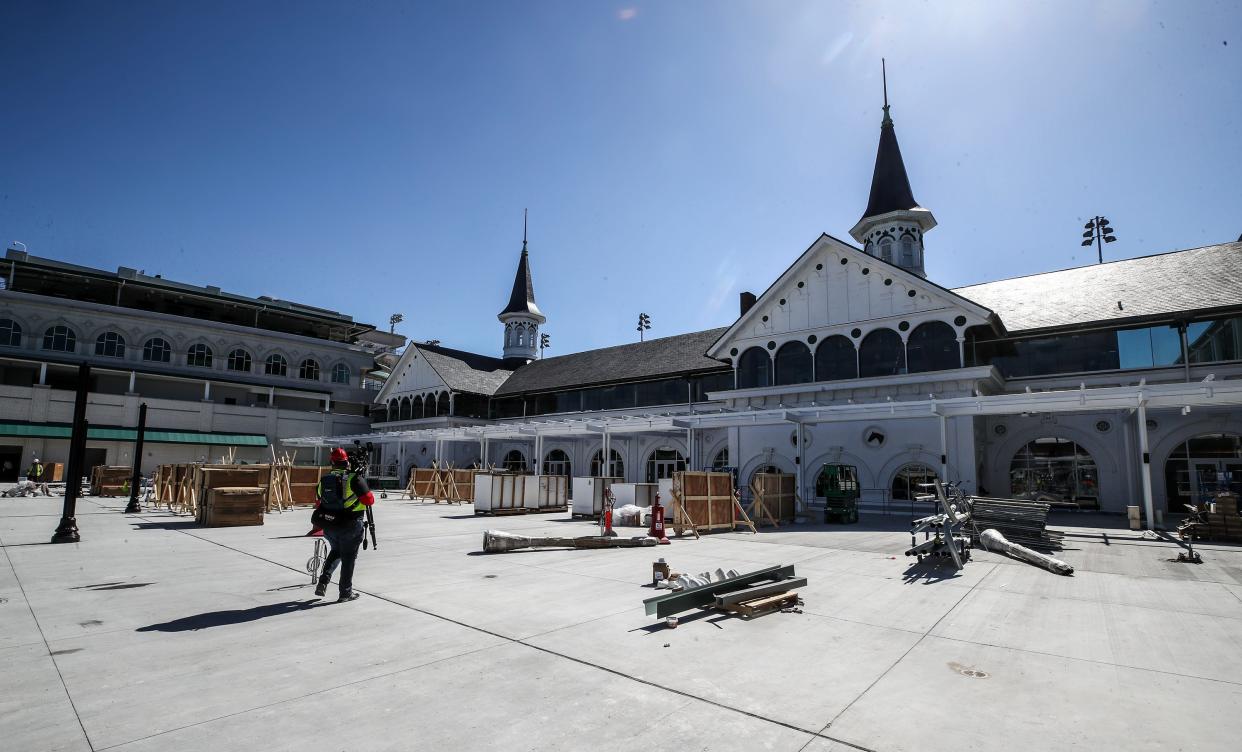
Above, a host of loges, terraces and balconies are set to offer an elevated view of the paddock, not to mention the Spires Terrace and Suites, nestled between the spires with a 360-degree view of the racetrack.
“We really wanted to make sure that we could create an impactful project that doesn't just speak to a few ticket purchasers or guests, but could transform the experience for everyone,” said Jordan, with Churchill Downs.
The prior paddock was demolished in 2022, allowing the track to start on much of the underground work for the future paddock. A temporary paddock, roughly in the place where the new permanent structure is located, was set up for the 2023 Kentucky Derby only to be ripped up for full-on construction that’s lasted the better part of a year.
The new paddock checks a few different boxes for Churchill Downs Inc.
You may like: Courier Journal publishing '150 Years of the Kentucky Derby' coffee table book. How to pre-order
Churchill Downs Inc. CEO Bill Carstanjen said in the company’s 2023 fourth-quarter earnings call in February that the paddock project was the most significant undertaking at the racetrack in his nearly two decades with the company, adding it would help “drive increases in the profitability of the Kentucky Derby,” though he declined to share projections at the time.
Of the approximately $1 billion worth of construction projects ongoing at Churchill Downs’ properties across the country, about 20% is tied to the paddock project. Since 2010, Churchill Downs Inc. has poured about $550 million into its namesake racetrack.
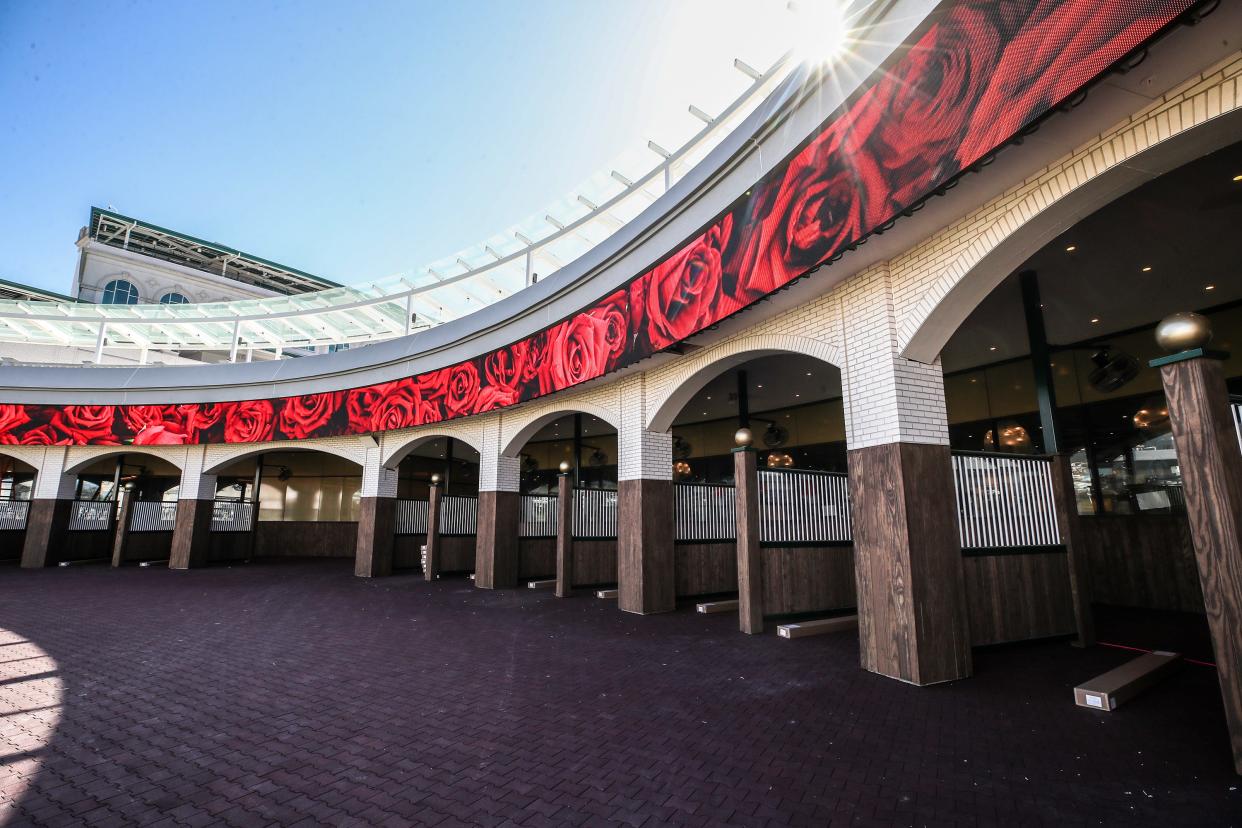
Churchill Downs has told investors the project will pay for itself in less than eight years.
In designing the project, Churchill Downs looked at other “marquee” events and studied their offerings, including high-end, one-of-a-kind bucket list experiences, Jordan said.
“These projects, and making sure that we stay relevant, is important,” he said. “We don't want to become irrelevant or we don't want people to keep coming to the Derby and say, ‘You know, I've done that.’”
About 3,600 new seats are being added to the paddock across all its spaces.
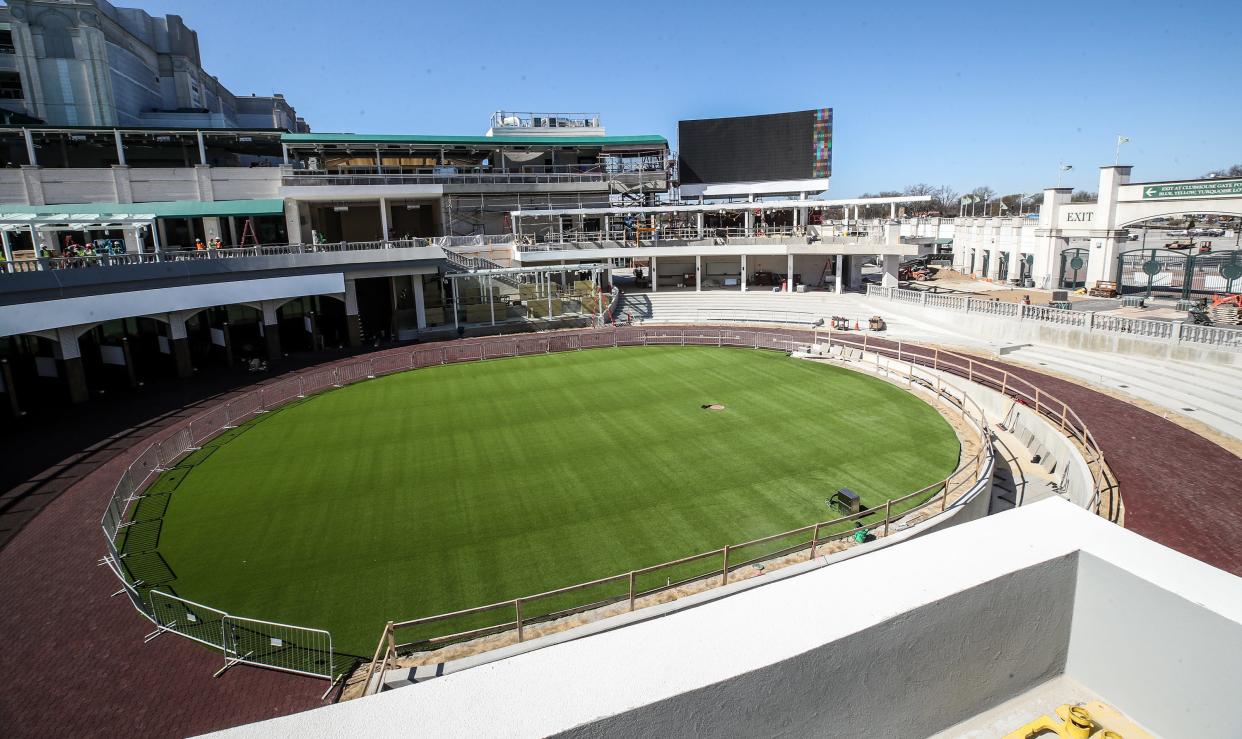
“That very much speaks to the trend in racing to stay viable, is you want to cater to everyone but you also want to continue dangling the carrot to people who can shell out for a magnificent experience on Derby,” Whitehead said. “So I think you're seeing a lot of these incredible social experiences coming available that maybe aren't accessible to everyone.”
Track officials also hope the reconfigured paddock allows for a better, less confusing flow from the grandstand to the clubhouse. Gone is the “choke point” of the fenced pathway that led horses between the racetrack and the paddock.
“It's much more intentional and logical compared to what we had previously, which was a bunch of buildings built around the paddock, which was difficult to move around," Jordan said.
Pieces of history have been revealed through the project, which stripped away decades of additions and exposed century-old features that had been covered.
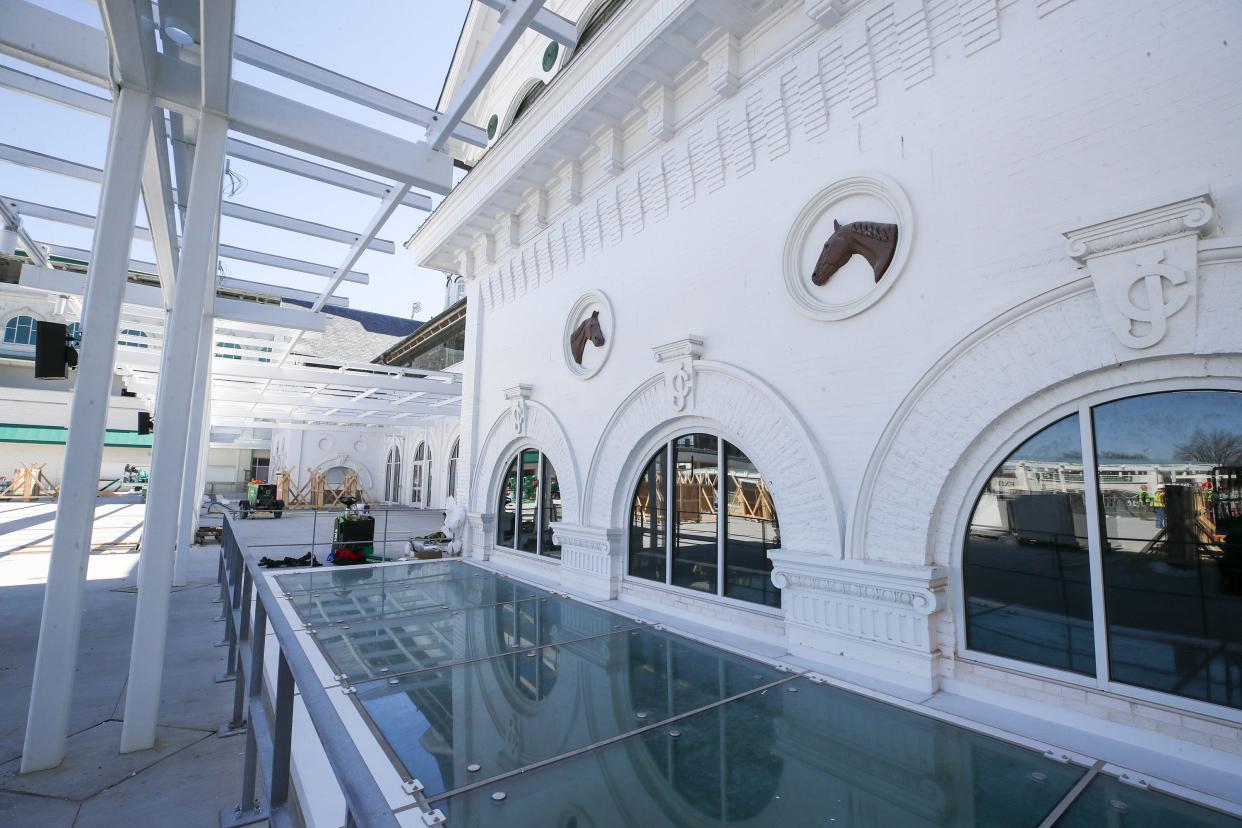
A drywalled narrow second-floor hallway beneath the spires has been opened up, revealing red brick that is part of the original 1895 grandstand. The new paddock’s second-floor terrace gets guests much closer to the twin spires and detailing on the backside of the grandstand.
These revealed and spotlighted bits of history nod to the longevity of the Louisville institution while blending with the new construction.
“We are always very intentional at Churchill Downs racetrack to try and create projects that celebrate and highlight our history and tradition,” Jordan said. “So much of the history that was covered up, we're exposing, getting people closer to that history, closer to the tradition, providing more spaces for people to create memories ... I think we're set up for people to really, really enjoy their time.”
Reach business and development reporter Matthew Glowicki at mglowicki@courier-journal.com.
This article originally appeared on Louisville Courier Journal: See how Churchill Downs’ Paddock has changed over 150 years
